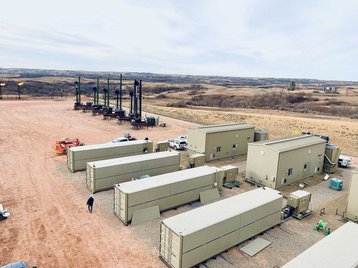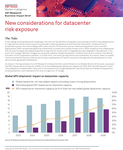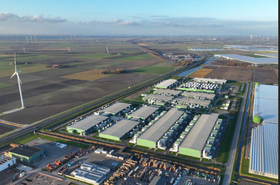Crusoe, the US-based operator that powers data centers with stranded energy such as wasted natural gas at oil wells, is using HPE supercomputers to offer AI services in the cloud.
The company places containerized facilities at oil wells across the US and in Argentina, where they are powered by methane gas which would normally be flared off and wasted. Its facilities are delivered by truck - and can also use stranded energy from renewable sources which is not matched by demand.
Having started out offering Bitcoin mining, Crusoe is now supporting HPC and AI services. It will deploy HPE Cray XD supercomputers, to be used by customers training large-scale AI models. The Cray XD systems have Nvidia H100 Tensor Core GPUs and Quantum-2 InfiniBand.
AI services are booming, with analysts predicting they could triple the demand for hyperscale data centers within the next six years, at a time when the growth and energy consumption required by today's data centers are causing concern about the availability of power.
“The AI opportunity comes with significant computing requirements, that if not managed correctly, can rapidly increase carbon footprint,” said Justin Hotard, executive vice president and general manager, HPC, AI & Labs at HPE. “We are committed to continue delivering world-leading energy-efficient supercomputers and proud to join Crusoe, one of the leading organizations in powering data centers with renewable energy, to offer customers advanced AI solutions in a sustainable computing platform.”
Most of Crusoe’s energy is not renewable, of course. It’s plain fossil methane, but Crusoe says it is turning waste energy into computing resources that can be used for good.
Chase Lochmiller, CEO and co-founder of Crusoe, said the company’s “energy-first approach” to computing infrastructure would help the world use artificial intelligence and high performance computing “without having to bear environmental consequences from the large energy demand associated with these workloads.”
The company says its use of otherwise wasted flared gas has reduced emissions of methane by burning the gas to produce CO2, which is a less potent greenhouse gas. In 2022, Crusoe says it prevented methane emissions equivalent to removing approximately 170,000 gasoline-powered cars from the road.







